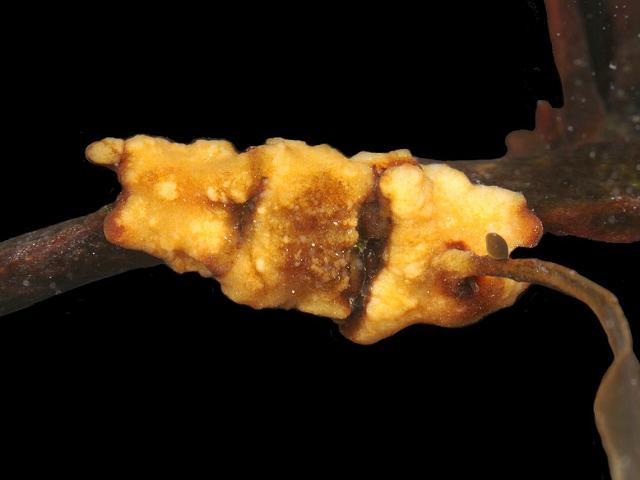
APHOTOMARINE
An educational resource dedicated mainly to the photography
and diversity of marine life that can be found in coastal waters
and intertidal areas of Great Britain and Ireland by David Fenwick.

Halenchus dumnonicus Coles, 1958 - A nematode causing galls on Fucus species (Nematodes)
Scroll down and rollover titles to change screen image or click on title to view image.
Fucus galling nematode
Halenchus dumnonicus
- on Fucus vesiculosus stipe 1
Halenchus dumnonicus
- on Fucus vesiculosus stipe 1
Fucus galling nematode
Halenchus dumnonicus
- on Fucus vesiculosus stipe 2
Fucus galling nematode
Halenchus dumnonicus
- on Fucus vesiculosus stipe 3
Fucus galling nematode
Halenchus dumnonicus
- on Fucus vesiculosus stipe 4
Fucus galling nematode
Halenchus dumnonicus
- nematode 1
Fucus galling nematode
Halenchus dumnonicus
- nematode 2
Fucus galling nematode
Halenchus dumnonicus
- nematode posterior 1
Specimens of galls found on the stipes of the brown seaweed Fucus vesiculosus, Bladder Wrack, on the middleshore at Albert Pier reef, Penzance, Cornwall. 14.11.16.
The galls and nematode appear to be the same as described and photographed for the paper by John W. Coles, Nematodes parasitic on sea weeds of the genera Ascophyllum and Fucus. J. mar. biol. Ass. UK. (1958) 37, 145-155.
The species here carries a question mark, because the nematode itself has not been verified. Halenchus dumnonicus has been found at Hannafore in Cornwall and Wembury in Devon between the years 1955 and 1957.
Halenchus dumnonicus can also be found on Saw or Toothed Wrack, Fucus serratus. Another species, Halenchus fucicola, causes galls on Knotted Wrack, Ascophyllum nodosum.

The main objective of this website is in furthering environmental awareness and education through the medium of photography. To increase awareness and access to the wildlife of the region and help
people find and identify it. Sometimes the difference between species is obvious but many species can only be determined by observing microscopic characteristics that are specific to any one species.